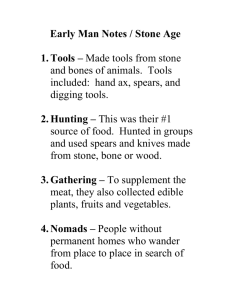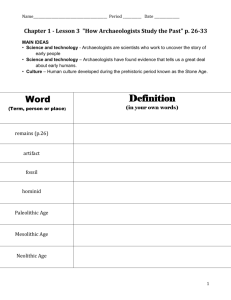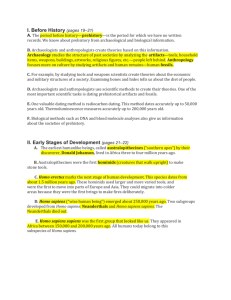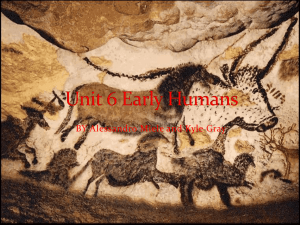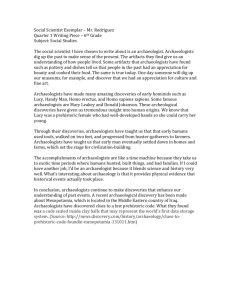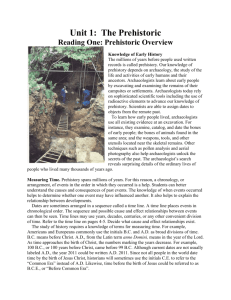Chapter 1: Early Prehistory of Africa The “cradle of humankind
advertisement
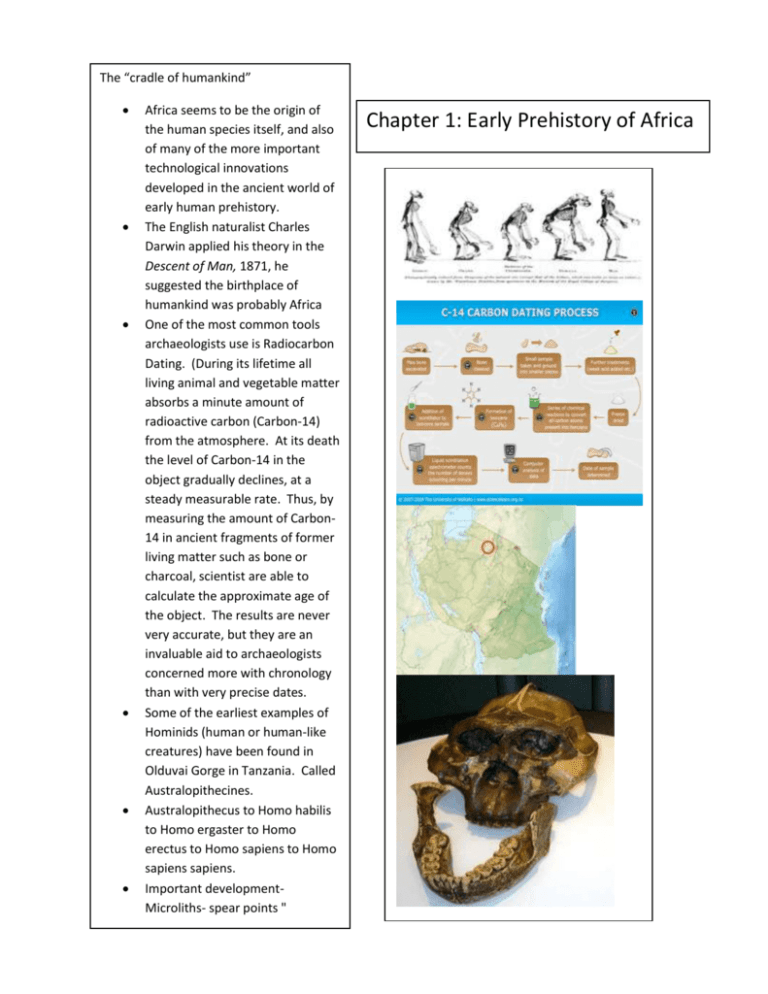
The “cradle of humankind” Africa seems to be the origin of the human species itself, and also of many of the more important technological innovations developed in the ancient world of early human prehistory. The English naturalist Charles Darwin applied his theory in the Descent of Man, 1871, he suggested the birthplace of humankind was probably Africa One of the most common tools archaeologists use is Radiocarbon Dating. (During its lifetime all living animal and vegetable matter absorbs a minute amount of radioactive carbon (Carbon-14) from the atmosphere. At its death the level of Carbon-14 in the object gradually declines, at a steady measurable rate. Thus, by measuring the amount of Carbon14 in ancient fragments of former living matter such as bone or charcoal, scientist are able to calculate the approximate age of the object. The results are never very accurate, but they are an invaluable aid to archaeologists concerned more with chronology than with very precise dates. Some of the earliest examples of Hominids (human or human-like creatures) have been found in Olduvai Gorge in Tanzania. Called Australopithecines. Australopithecus to Homo habilis to Homo ergaster to Homo erectus to Homo sapiens to Homo sapiens sapiens. Important developmentMicroliths- spear points " Chapter 1: Early Prehistory of Africa Hunting, fishing, and gathering in the Late Stone Age Much of our knowledge about the way of life of Late Stone Age hunter-gatherers has come from extensive archaeological research. 20th century- archaeologists studied the few remaining Khoisan-speaking people still practicing a largely hunting and gathering existence in the dry Kalahari regions of modern Botswana…results of this research have helped archaeologists to interpret the evidence found in their Late Stone Age excavations. Evidence of Late Stone Age microlith technology has been found widespread throughout the savannah grasslands and dry woodlands of Africa. Most vivid evidence is in paintings and engravings on rock walls of caves and shelters.- paints made from animal fats, colored with vegetable dyes and applied with sticks or feathers. Hunting: especially in the Savannah- common techniquebow and arrow- arrow shaft often tipped with a barbed point of stone or bone treated with vegetable poison- enabled small groups of humans to effectively hunt large game. Fishing on the rivers and coast, especially shellfish- bone-tipped harpoons, tidal traps and nets Gathering probably done by women Social Organization: Gathering of nuts, fruits, berries, etc. contributed a more steady caloric function…therefore may have been more egalitarian society Recent studies of Khoisan hunters of the Kalahari suggest that one of the most important aspects of hunter-gatherer groups was their dependence upon cooperative labour and communal effort for survival. Though there was a division of labor between men and women, neither one had higher status than the other.





